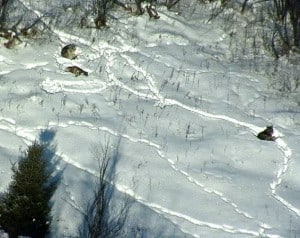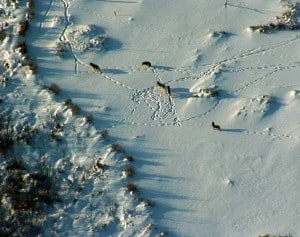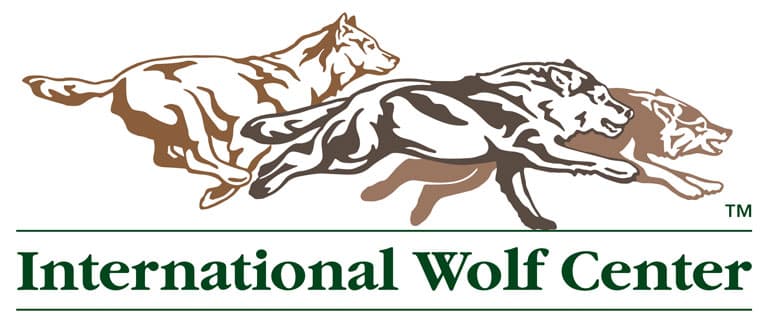Select a Location
Wisconsin at a glance
Gray wolves once existed throughout Wisconsin, but their numbers began to decline soon after European settlement. From 1865 to 1957, wolves were primarily removed through shooting and trapping. After being protected under the Endangered Species Act in 1974, wolves immigrated from Minnesota and established territories in Wisconsin. According to federal recovery criteria, the wolf population in Wisconsin has been considered biologically recovered for several years. In January 2012, they were delisted from the endangered species list and managed at the state level until December 2014, when they were placed back on the list.
Wolves were again delisted in January 2021 and are currently managed by the state’s Department of Natural Resources. A wolf hunt took place in February 2021. However, following a federal court ruling on February 10, 2022, gray wolves were listed as an endangered species across the lower 48 states (excluding the northern Rocky Mountains) and are now federally protected. As a result, harvesting and lethal control of wolves are prohibited.
Public attitudes toward wolves are generally positive, but the subject remains controversial. In recent years, about 25% to 50% of wolf mortality has been attributed to illegal killings by humans. Wolves primarily prey on deer, beavers, and turkeys, especially in central regions of the state. They inhabit the northern portion and a small central area known as the central forest of Wisconsin.
Species Information
Species
Common Name: gray wolf
Latin Name: Canis lupus
Estimated number of wolves: 1226 wolves in 336 packs, according to the Wisconsin Department of Natural Resources (as detailed in this 2025 report).
Population trend: Stable
Legal status: Federally Protected
Human Relationships
History
- Wolf Recolonization in Wisconsin
- Mech, L. David. 1993. Eastern Timber Wolf — A Howling Success for the Endangered Species Act. International Wolf Center and United States Fish and Wildlife Service Division of Endangered Species Flier. 1:1-2.
Recovery and Management
- Wolf Conservation and Management in Wisconsin (WDNR)
- Wolf hunting and trapping in Wisconsin
- US Fish and Wildlife: Gray wolf recovery in Minnesota, Wisconsin and Michigan
- 2011 Wisconsin Act 169 (wolf harvest bill)
Depredation
- Wolves and Hunting Dogs in Wisconsin
- Article: Wisconsin tradition – hunting bears with dogs – comes under attack by wolf advocates
- A Guide for Reducing Conflict Between Wolves and Hunting Dogs
- Wisconsin lawmaker proposes ending payments for hunting dogs killed by wolves (from February 2018)
- Wildlife Damage Information System
- Gray wolf depredation mapping application
Ecology
Biology
- Mech, L. David, Fritts, S. H. and Wagner D. 1995. Minnesota Wolf Dispersal to Wisconsin and Michigan. American Midland Naturalist. 133:368-370.
- Thieking, Arla, Segar, M. Goyal, Mech, L. David et al. 1991. Seroprevalence of Lyme Disease in Gray Wolves from Minnesota and Wisconsin. Journal of Wildlife Diseases. 28(2):177-182.
Habitat
- Richard P. Thiel, Samuel Merrill, and L. David Mech. 1998. Tolerance by Denning Wolves, Canis lupus,to Human Disturbance. Can. Field-Nat. 112(2):340-342. (en Espanol – Tolerancia de los lobos, Canis lupus, en temporada de preparacion de la madriguera a las alteraciones provocadas por el hombre. Translation by Marcos Randulfe.)




